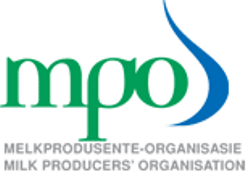
by Bobby Madhav, FNB head of trade and structured trade and commodity finance
South Africa’s trade surplus for May 2021 rose to R54,6 billion, beating market expectations of R46,5 billion. The surplus is the highest ever recorded in the countries’ history.
Exports grew by 1,5% month-on-month to reach an all-time high of R163 billion, with massive contributions by vehicles and transport equipment (+R4,2 billion/+26%), as well as vegetable products (R2,3 billion/+35%). Imports declined marginally by 0,9%.
South Africa has returned positive trade balances with all major regions, bar Asia. Pre-COVID-19, the country only had a surplus with Africa on a continuous basis. The trade surplus with Africa is by far the greatest of all the regions at almost R25 billion.
The United States was South Africa’s largest export partner for a second month in a row, a fairly unprecedented scenario. China is, however, expected to retain its dominant position going forward.
Ports, as a critical component in the logistics chain of importers and exporters, have received a well-deserved focus over the last month.
- The dismal performance of South African ports was highlighted in a recent report of the World Economic Forum, which ranked our ports at the bottom end of a global list regarding efficiencies. All three main ports have been ranked 347 or lower out of a list of 351 ports, with many African ports ranked higher than those of South Africa.
- The announcement by the President that Transnet National Ports Authority will be corporatised and established as an independent subsidiary of Transnet, must be welcomed. This will allow port generated income to be invested in infrastructure upgrades and potentially private sector partnerships.
- Current delays of between 10 and 20 days at our ports are expected to increase, as a rise in infections of COVID-19 in the port city of Yantian, China (the third largest port in the world), impact global sea routes and South Africa specifically, adding to shipping costs.
Whilst some green shoots have been evident in the local economy, various downside risks exist for the local economy and trade in particular.
These include the rise of COVID-19 infections, especially the new variant that has led to an increase in lockdown levels recently; port inefficiencies and thus increased logistics costs; instability in the electricity grid; and further increased levels of unemployment.
| Sam Mashele | public relations consultant | FNB Corporate Affairs 6th Floor, 1 First Place Bank City, Cnr Simmonds and Pritchard, JHB | Tel: (087) 736 5997 | Cell: 078 045 0784 E-mail: Sam.Mashele@fnb.co.za | Web: www.fnb.co.za | Mobile: www.fnb.mobi |
|
Published on Thursday, 8th July 2021 - 10:20
Recent Posts
disclaimer









